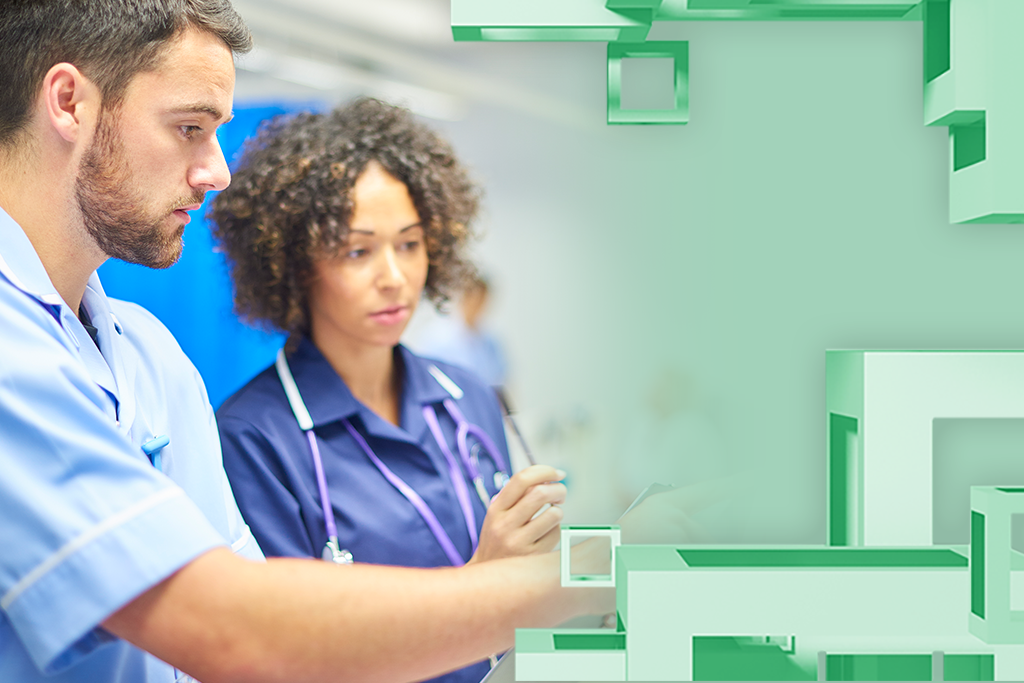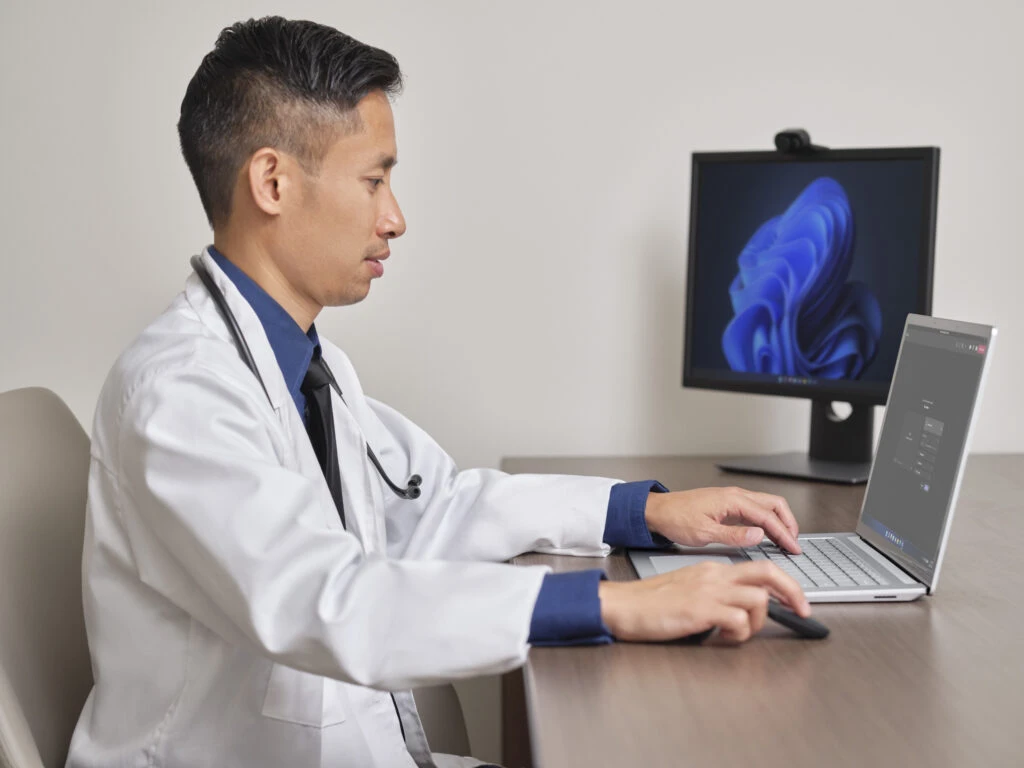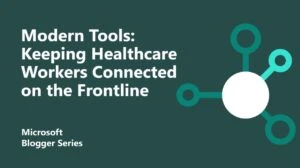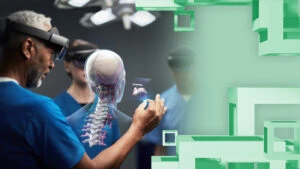
Using technology to manage the healthcare backlog
Former NHS chief executive Simon Stevens once said that the only renewable source of energy in healthcare is patients.

I think this is true. There are always going to be more patients. But as recent times have shown, there’s hardly ever going to be enough of everything else.
The last two years has certainly exacerbated this situation. Backlogs of patients requiring care have multiplied dramatically. We’ve essentially lost two years’ worth of elective treatment. And waiting lists are worse than ever.
Despite this, I’m actually optimistic. We’ve known that we would have to face up to these challenges eventually. The pandemic has significantly brought them forward, but we’ve also learnt a lot about ourselves over the last few years.
It is a fact of life that demand for healthcare will grow faster than our supply of doctors and nurses. As a result, we must be open to how technology can help.
What’s interesting, however, is that a lot of the challenges that we didn’t know how to answer have already been by necessity. We didn’t know if people would use their phones and various technology to interact with healthcare. But they have and it’s not been anywhere near as problematic as we thought.
In other words, it turns out that technology is much further along than we thought it would be for our sector.
More importantly, we can now much more confidently use it to deal with more current and future issues. We can tackle key problems such as clearing waiting lists, improving time management and more.
The importance of looking at the bigger picture
I may be Chief Clinical Information Officer at Microsoft, but I’m also a paediatrician. Spending my Fridays at the children’s hospital is still my favourite part of the week. This is where I get to really see life on the shop floor. As a result, I can help find the digital solutions to help improve it.
And the inspiration can really come from anywhere. For example, at the hospital we use an orange, lever arch folder where we store all the relevant information about a patient; tests we’ve run, follow-ups and more.
One time the orange folder broke. There was panic, because we didn’t have another ‘orange’ folder to replace it (we only had black ones). We ended up having to order a new one online.
Now, the beauty of my job is not just finding a solution to this particular – and relatively small – issue. But to solve them on a much broader scale. Replacing the orange folder shouldn’t be the end goal. There are so many other parts of that system that we cannot just improve but transform for the better.
Using the cloud to stay agile in healthcare

One of the big issues we’ve always had in healthcare is that there’s always another revolution coming, another update or digital initiative that needs to be actioned.
To prevent the inevitable fatigue that comes from lots of change, we need to ensure everything we are doing is scalable and fit for the future. I believe that the answer to this is the cloud. We’re never going to be able to implement all of this if we do it as a small step. The last two years have shown us that we need to take some big steps. Cloud technology gives us just that. Combine that with Microsoft’s suite of CRM apps, like Dynamics 365, and we will be able to deliver patients with specific information, send them personalised advice and engage with them more.
Just look at the work we’re doing with Leeds Teaching Hospitals NHS Trust. They have moved their entire electronic record to the cloud. This has given them functionalities and scale that will serve them well into the future.
Leeds covers one and a half million patients. They’ve got about 20,000 staff and the sheer number of electronic forms that they must process has grown by 300,000 since 2015. That’s hundreds of thousands more forms that patients and caregivers are filling in. Additionally, they then need to be processed. It would be a nearly impossible task if they hadn’t just moved it all to the Azure cloud.
Beyond making them far more scalable this has also helped them to use their extra computing elsewhere. And therefore, to do things such as keeping track of data, analyse it and review it for any future needs.
Simplifying processes and consultations via Teams
Another technology that’s proving key in solving backlogs is Microsoft Teams.
The Rotherham NHS Foundation Trust caregivers lead the way in this respect. They carry out virtual consultations that allow patients to utilise teams for clinical interactions.
This has double benefits. On one hand, it allows caregivers to visit their patients without having them come to the clinic. On the other, it gives patients greater visibility of their appointments. Additionally, they can reschedule without having to go through back-and-forth calls.
I have learned the pains of contacting patients through regular phones the hard way. For privacy reasons, the NHS forbids us to leave voicemails to patients, unless that person has a message that states who they are. Whilst understandable, this is a rather outdated policy as now no one picks up a private callers’ phone and too few people check their voicemail.

Wouldn’t it be great if we were able to start saying to our patients directly during the consultation: I’m going to send you a link for you to have the next appointment. However, even better than that they can choose a time that works best and it will automatically go into both our calendars.
And if you need to change it, you can do that online without wasting time with inefficient telephone calls.
Managing resources though Power Apps
Another brilliant way to use technology to clear backlogs and waiting times is using data and data-centric low and no code solutions.
We all obsess about this ability to try and find the right data and then be able to use it meaningfully to achieve better patient outcomes. With the help of cloud technology, organisations are increasingly shifting towards huge data centres. Here, they can analyse data in real time and use it to make decisions and forecast, identify patterns and much more.
Just look at the extraordinary work by the Northern Care Alliance. They use Microsoft Power Apps to get continuous, real-time updates on the state of beds and bays at their facilities.
In operation since before the pandemic, this solution turned out to be a game changer during the tough months of lockdowns, when the status of wards and beds would evolve constantly. Thanks to the solution, staff at the Northern Care Alliance were able to check availability on real-time dashboards and allocate available beds in a much more efficient way.
Driving digital modernisation in healthcare
The most amazing thing about the NHS is that it’s simply the world’s biggest team. Every person working within it is there to look after patients and is committed to doing things better.
If we can use technology to let this huge team be more efficient and work better together, we’ll really be able to help clear the backlog and relieve staff of all the simple repetitive tasks that frustrate them and get in the way of treating patients.
Organisations often ask me how they can start this much-needed digital modernisation in the most effective way.
My advice is to simply start off by looking around you. See what other organisations are doing, and then pick up the phone and find out how they got started and what is going well. Also keep an open mind. In my experience, there is always a group of people that will remain negative. But don’t be discouraged by that – once you get started, you’ll be surprised at how quickly momentum can build and what seemed implausible becomes routine.
Lastly, make sure that you set and over-communicate your goals. Embracing new technologies will help empower all caregivers to achieve more – freeing them to spend more time caring for patients and leading to better outcomes. Plus, you’ll be making sure the foundations are strong for continued innovation, ensuring healthcare is fit for the future.

Microsoft Envision UK
London, May 19 2022
Join us at our first in-person UK conference in over two years where we will explore the road ahead in 2022 and beyond.
Find out more
Microsoft Cloud for Healthcare
The transformation imperative in healthcare
The Digital Healthcare Playbook
Healthcare Delivery Cloud Solutions
About the author

Umang is a Chief Clinical Information Officer at Microsoft with a passion for ensuring that technology delivers its full potential and value in healthcare. He is also a practising NHS paediatrician and has a background working across multiple sectors covering both payors and providers. Umang was a foundational member of start-up Babylon Health which had a successful IPO in 2021 on the New York Stock Exchange. With Microsoft, Umang is helping shape the digital transformation in health across the UK which is aiming for better outcomes through seamless integration and innovation.




